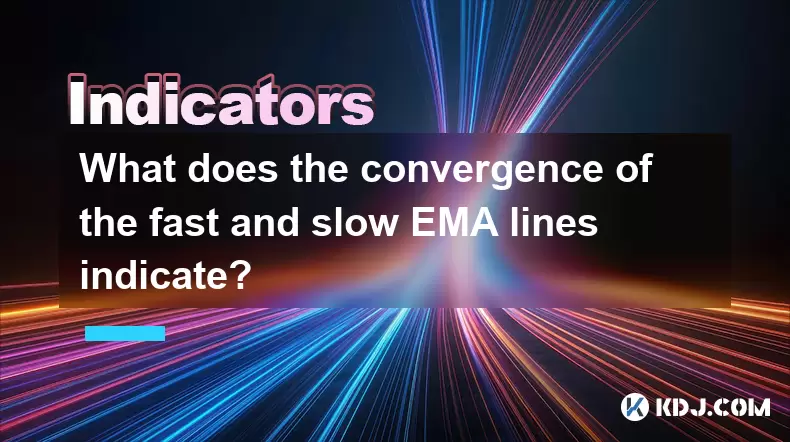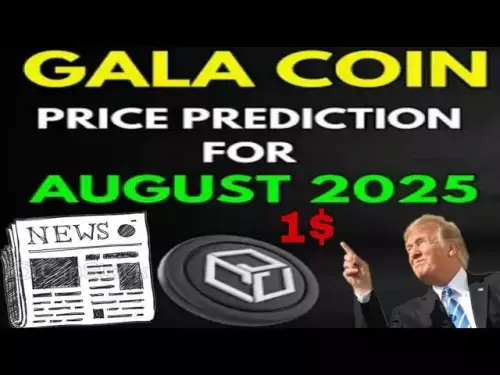-
 Bitcoin
Bitcoin $115100
-1.30% -
 Ethereum
Ethereum $4758
-1.70% -
 XRP
XRP $3.027
-2.19% -
 Tether USDt
Tether USDt $0.9998
-0.01% -
 BNB
BNB $883.2
-1.42% -
 Solana
Solana $204.0
2.62% -
 USDC
USDC $1.000
0.02% -
 Dogecoin
Dogecoin $0.2371
-0.97% -
 TRON
TRON $0.3612
-1.24% -
 Cardano
Cardano $0.9128
-2.19% -
 Chainlink
Chainlink $26.13
-3.93% -
 Hyperliquid
Hyperliquid $44.73
0.90% -
 Sui
Sui $3.715
-0.56% -
 Stellar
Stellar $0.4153
-2.41% -
 Ethena USDe
Ethena USDe $1.000
-0.04% -
 Bitcoin Cash
Bitcoin Cash $588.9
-2.06% -
 Avalanche
Avalanche $25.91
3.27% -
 Hedera
Hedera $0.2525
-1.45% -
 Litecoin
Litecoin $120.9
-1.35% -
 UNUS SED LEO
UNUS SED LEO $9.607
0.30% -
 Toncoin
Toncoin $3.382
-0.31% -
 Shiba Inu
Shiba Inu $0.00001329
-0.38% -
 Uniswap
Uniswap $11.38
-1.67% -
 Polkadot
Polkadot $4.222
2.83% -
 Aave
Aave $354.5
4.93% -
 Dai
Dai $0.0000
0.00% -
 Bitget Token
Bitget Token $4.704
-1.49% -
 Cronos
Cronos $0.1565
1.83% -
 Ethena
Ethena $0.7463
1.55% -
 Monero
Monero $265.8
-0.39%
What does the convergence of the fast and slow EMA lines indicate?
EMA convergence signals weakening momentum, often preceding a crossover—watch for it near key levels to anticipate potential reversals in crypto trends.
Aug 13, 2025 at 11:35 am

Understanding the EMA Lines in Cryptocurrency Trading
The Exponential Moving Average (EMA) is a widely used technical indicator in the cryptocurrency trading community. Unlike the Simple Moving Average (SMA), the EMA places greater weight on recent price data, making it more responsive to new information. Traders typically use two EMAs simultaneously: a fast EMA, which tracks shorter time periods (e.g., 9 or 12 periods), and a slow EMA, which covers longer intervals (e.g., 26 or 50 periods). The interaction between these two lines provides valuable insights into market momentum and potential trend reversals.
When the fast EMA crosses above the slow EMA, it often signals a bullish shift in market sentiment. This convergence indicates that recent price momentum is accelerating faster than the longer-term average, suggesting that buyers are gaining control. Conversely, when the fast EMA crosses below the slow EMA, it may reflect bearish momentum, with sellers overpowering buyers. These crossovers are commonly used as entry or exit signals in trading strategies.
What Convergence Actually Means
Convergence between the fast and slow EMA lines does not always mean a crossover. It refers to the process where the two lines move closer together over time. This narrowing gap can indicate decreasing momentum in the current trend. For example, in an uptrend, if the fast EMA begins to approach the slow EMA from above, it suggests that the upward price acceleration is weakening. Similarly, in a downtrend, if the fast EMA rises toward the slow EMA, it may signal that downward pressure is easing.
This phase of convergence is critical because it often precedes a crossover event. Traders watch for this tightening closely, as it may foreshadow a reversal or consolidation. The significance of convergence increases when it occurs after a prolonged trend, as extended moves often lead to periods of correction or retracement. The visual proximity of the two lines on a price chart can act as a warning sign for traders to reassess their positions.
How to Identify EMA Convergence on a Chart
To identify EMA convergence, traders must first apply both the fast and slow EMA indicators to their charting platform. Most cryptocurrency trading platforms—such as TradingView, Binance, or MetaTrader—allow users to add multiple EMAs.
- Navigate to the indicators section and search for “Exponential Moving Average.”
- Add the first EMA and set the period to a lower number, such as 9, to represent the fast EMA.
- Add a second EMA and set the period to a higher number, such as 26, for the slow EMA.
- Observe the two lines on the price chart over time.
As the lines begin to move closer together, note the context of the current trend. If the price has been rising and the fast EMA starts descending toward the slow EMA, this is a bearish convergence. If the price has been falling and the fast EMA ascends toward the slow EMA, this is a bullish convergence. The visual narrowing is the key signal.
Using EMA Convergence in Trading Strategies
Many traders incorporate EMA convergence into their decision-making process as part of a broader strategy. One common method is combining EMA convergence with volume analysis and support/resistance levels.
- When convergence occurs near a key support level and is accompanied by increasing volume, it may suggest a potential bullish reversal.
- When convergence appears near resistance with declining volume, it could indicate a bearish reversal.
- Some traders wait for the actual crossover after convergence to confirm the signal before entering a trade.
Another effective approach is using EMA convergence within a trend-following system. For example, in a strong uptrend, temporary convergence may indicate a pullback rather than a reversal. Traders might use this phase to add to long positions if other indicators, such as the Relative Strength Index (RSI), show the asset is not overbought.
It is essential to avoid relying solely on EMA convergence. False signals can occur, especially in volatile cryptocurrency markets. Combining it with candlestick patterns or Fibonacci retracement levels enhances reliability.
Common Misinterpretations of EMA Convergence
A frequent mistake is assuming that convergence automatically leads to a crossover and trend reversal. In reality, the lines may converge and then diverge again without crossing, especially in ranging or sideways markets. This phenomenon is known as EMA compression and reflects market indecision rather than a definitive signal.
Another misinterpretation involves ignoring the timeframe. Convergence on a 5-minute chart may be insignificant compared to the same pattern on a daily chart. Higher timeframes provide stronger, more reliable signals due to reduced noise and greater participation from institutional traders.
Additionally, traders sometimes overlook the impact of market news. A sudden regulatory announcement or exchange outage can cause artificial price spikes that distort EMA behavior. Always consider external factors before acting on convergence signals.
Practical Example: Bitcoin and EMA Convergence
Consider a scenario on the BTC/USDT daily chart. Suppose Bitcoin has been in a downtrend for several weeks, with the 9-day EMA consistently below the 26-day EMA. Over the past five days, the 9-day EMA begins to rise and moves closer to the 26-day EMA, while the price stabilizes near $27,000—a known support zone.
- The narrowing gap between the EMAs indicates convergence.
- Trading volume increases slightly, suggesting renewed buying interest.
- The RSI moves from 30 to 45, exiting oversold territory.
This combination suggests that downward momentum is fading. While no crossover has occurred yet, the convergence alerts traders to prepare for a possible long entry. If the 9-day EMA crosses above the 26-day EMA in the following days, it would confirm the bullish signal.
Frequently Asked Questions
What is the difference between EMA convergence and a crossover?
EMA convergence refers to the process where the fast and slow lines move closer together, indicating weakening momentum. A crossover occurs when one line actually crosses over the other, which is a stronger signal often used for trade execution.
Can EMA convergence occur in sideways markets?
Yes, EMA convergence frequently appears in sideways or consolidating markets. In such conditions, the lack of a clear trend causes both EMAs to move in parallel, leading to prolonged convergence without a definitive crossover.
Which EMA periods are best for detecting convergence in crypto trading?
Common combinations include 9 and 26, 12 and 26, or 50 and 200. Shorter periods like 9 and 26 are more sensitive and suitable for intraday trading, while 50 and 200 are better for identifying long-term trends.
Should I trade based solely on EMA convergence?
No, EMA convergence should not be used in isolation. It is best combined with volume analysis, price action, and other technical indicators to improve accuracy and reduce false signals.
Disclaimer:info@kdj.com
The information provided is not trading advice. kdj.com does not assume any responsibility for any investments made based on the information provided in this article. Cryptocurrencies are highly volatile and it is highly recommended that you invest with caution after thorough research!
If you believe that the content used on this website infringes your copyright, please contact us immediately (info@kdj.com) and we will delete it promptly.
- XYZVerse, Shiba Inu, and the 2025 Bull Cycle: A Meme Coin Evolution
- 2025-08-24 13:05:12
- WLFI Token, BingX, and the Trading Landscape: A New York Perspective
- 2025-08-24 12:45:20
- Aave, Governance, Allocation: Navigating DeFi's Shifting Sands
- 2025-08-24 12:45:20
- Crypto Coins in 2025: Meme Coins, Undervalued Blockchains, and Bull Run Predictions
- 2025-08-24 13:05:12
- Fed Pivot Ignites Crypto Rally: Altcoins Set to Outperform?
- 2025-08-24 13:25:12
- Eric Trump, Tokyo, and Metaplanet: A Bitcoin Bonanza?
- 2025-08-24 11:05:13
Related knowledge

What does it mean when the +DI and -DI cross frequently in the DMI indicator but the ADX is flattening?
Aug 11,2025 at 03:15am
Understanding the DMI Indicator ComponentsThe Directional Movement Index (DMI) is a technical analysis tool composed of three lines: the +DI (Positive...

What does the sudden appearance of a "dark cloud cover" candlestick pattern during an uptrend indicate?
Aug 13,2025 at 11:35am
Understanding the 'Dark Cloud Cover' Candlestick PatternThe dark cloud cover is a bearish reversal pattern in technical analysis that typically appear...

What does it mean when the moving average, MACD, and RSI all send buy signals simultaneously?
Aug 11,2025 at 01:42pm
Understanding the Convergence of Technical IndicatorsWhen the moving average, MACD, and RSI all generate buy signals at the same time, traders interpr...

What does it mean when both the KDJ indicator and the RSI show overbought signals simultaneously?
Aug 13,2025 at 11:35am
Understanding the KDJ Indicator in Cryptocurrency TradingThe KDJ indicator is a momentum oscillator derived from the Stochastic Oscillator, widely use...

What does it mean when the price is trading above the SAR indicator but the red dots are densely packed?
Aug 09,2025 at 11:49pm
Understanding the SAR Indicator and Its Visual SignalsThe SAR (Parabolic Stop and Reverse) indicator is a technical analysis tool used primarily to de...

What does it mean when the candlestick chart forms a "Morning Star" but trading volume is sluggish?
Aug 12,2025 at 06:28pm
Understanding the Morning Star Candlestick PatternThe Morning Star is a three-candle bullish reversal pattern commonly observed in cryptocurrency pric...

What does it mean when the +DI and -DI cross frequently in the DMI indicator but the ADX is flattening?
Aug 11,2025 at 03:15am
Understanding the DMI Indicator ComponentsThe Directional Movement Index (DMI) is a technical analysis tool composed of three lines: the +DI (Positive...

What does the sudden appearance of a "dark cloud cover" candlestick pattern during an uptrend indicate?
Aug 13,2025 at 11:35am
Understanding the 'Dark Cloud Cover' Candlestick PatternThe dark cloud cover is a bearish reversal pattern in technical analysis that typically appear...

What does it mean when the moving average, MACD, and RSI all send buy signals simultaneously?
Aug 11,2025 at 01:42pm
Understanding the Convergence of Technical IndicatorsWhen the moving average, MACD, and RSI all generate buy signals at the same time, traders interpr...

What does it mean when both the KDJ indicator and the RSI show overbought signals simultaneously?
Aug 13,2025 at 11:35am
Understanding the KDJ Indicator in Cryptocurrency TradingThe KDJ indicator is a momentum oscillator derived from the Stochastic Oscillator, widely use...

What does it mean when the price is trading above the SAR indicator but the red dots are densely packed?
Aug 09,2025 at 11:49pm
Understanding the SAR Indicator and Its Visual SignalsThe SAR (Parabolic Stop and Reverse) indicator is a technical analysis tool used primarily to de...

What does it mean when the candlestick chart forms a "Morning Star" but trading volume is sluggish?
Aug 12,2025 at 06:28pm
Understanding the Morning Star Candlestick PatternThe Morning Star is a three-candle bullish reversal pattern commonly observed in cryptocurrency pric...
See all articles

























































































